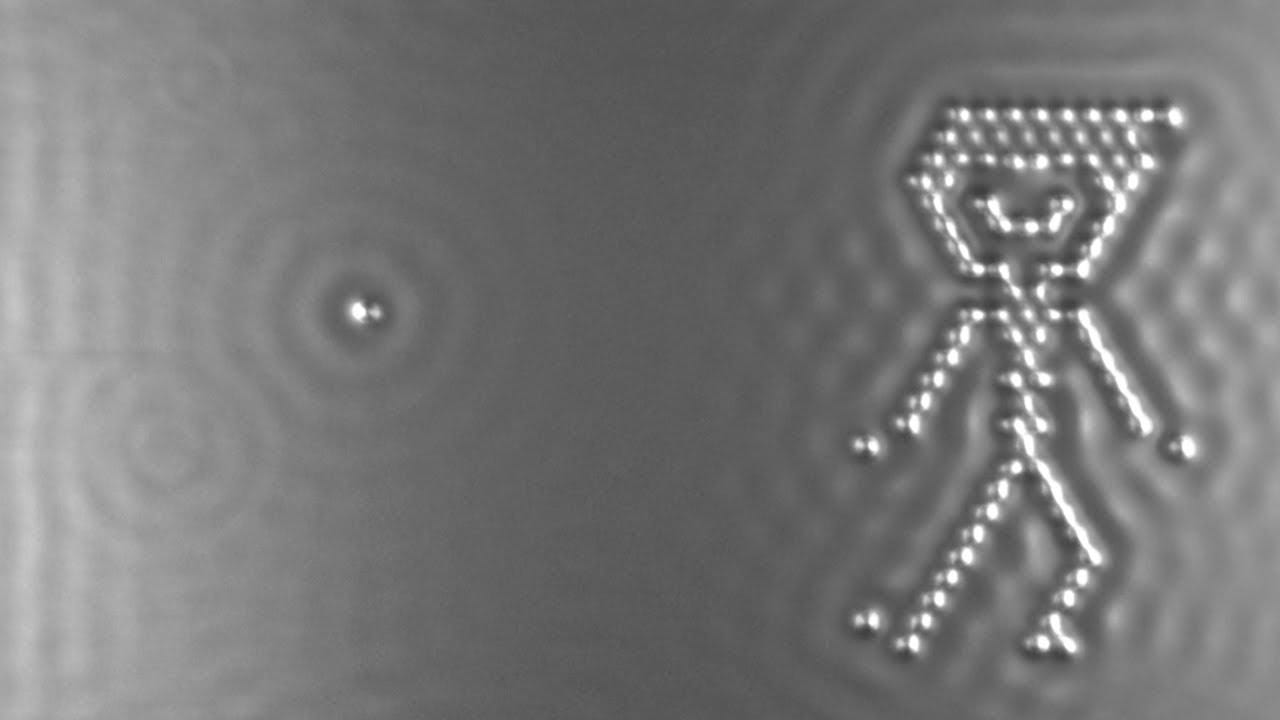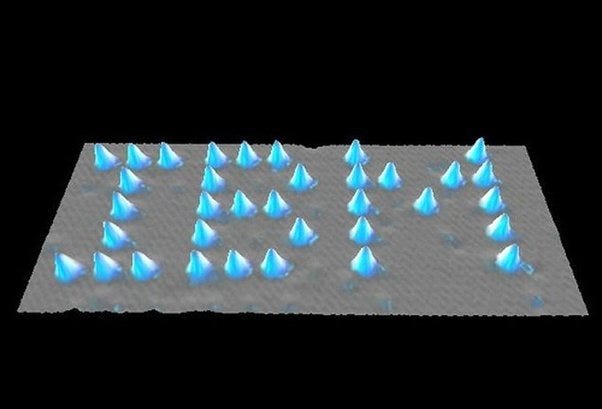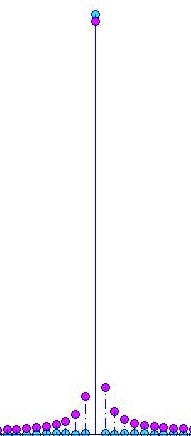
IBM’s A Boy and His Atom
I recently came across a book called Breaking the Habit of Being Yourself by Dr. Joe Dispenza. I had to drop the book after a couple of chapters. It seems the entire basis for the book is based on a misunderstanding of Heisenberg’s Uncertainty Principle and the observer effect. I’m surely being picky here, and it’s likely the case that Dr. Dispenza has solid advice on how to break habits; it is my own ego that prevented me from reading further, not necessarily Dispenza.
But I would still like to clear the air here and explain how we should interpret Heisenberg’s Uncertainty Principle. Dr. Dispenza starts the book by explaining what he thinks the observer effect is. It has been theorized that an electron may be in every place at once, but then once observed, our very act of observing that the electron fixes its position. Because of this, Dispenza seems to be under the impression that conscious minds have the ability to influence the objective universe as we view it. Mind over matter, basically. And he then proceeds to use this as a motivational tactic; the wishful thinking that you have the power to change the world!
No you don’t. Not like that at least.
Physicists use this observer effect term to describe the problem that humans have to see what they’re experimenting on, and visible light can influence those experiments. Light itself interacts with electrons, so to shine a light on an electron in hopes of measuring it will actually disturb it by changing its momentum. It’s not the act of seeing that changes the circumstances of particles, it’s the other variables that must be present in order for us to see.
Now Heisenberg’s Uncertainty Principle is a law of nature that seemingly prohibits us from measuring the exact position of a wave particle and simultaneously calculating its momentum. For thousands of years, western science has thought of the microscopic world as being made up of little balls of stuff, and most of us were brought up believing the same thing. However, the closer we look, the more we’re beginning to realize that the Eastern world had a better theory for the fundamental nature of the stuff around us. The world doesn’t seem to be made up of little balls that revolve around other little balls. It seems to behave more like vibrations in spacetime.

How particles are better imagined
Much of the confusion in science comes from the failing of words, mostly because we’re still working out what the best definitions of those words should be. So when someone uses the word particle, don’t think of a little ball of stuff; this is now an outdated word that implies too many solid structural properties.

Wave at single point in time
In the most basic sense of the principle, you can think of the uncertainty phenomenon as trying to nail Jello to a wall. A similar problem occurs when we try to measure the position of a sound wave. So tell me, where exactly is a sound wave located? Is it even possible to locate any wave? In a sense, yes, we can estimate the greatest spike of that wave by cutting this wiggle into even smaller sub-wiggles, until we get the greatest spike of that wiggle in a single point in time. But at this point, we run into another problem. Since we’ve cut this wave into the smallest possible wiggle, we no longer can measure it’s frequency. Remember, the frequency of a wave is the amount of crests or troughs over a given period of time; since we’ve compressed the wave to a single point in time, it doesn’t really have a frequency. So this is like a position/frequency uncertainty principle for sound waves.
We haven’t totally cracked the explanation of Heisenberg’s principle; the quantum world is more mysterious. But both of these uncertainty statements describe how much information we are ever able to extract from a system. Here’s the best video I’ve come across on the subject. Thank you PBS Spacetime.
With electrons and other particles it’s a little weirder. Heisenberg’s Uncertainty Principle basically says that we can never know both the position of a wave particle and its momentum. Here’s a video by Veritasium that shows the principle in action. His explanation for why the world behaves this way is rather lacking.
“At a certain point, you come to this limit, so that if you narrow this [if the position of the particle becomes more precise] any further, you are going to break this uncertainty relationship. So what needs to happen is the uncertainty of momentum needs to go up …to ensure that we don’t break Heisenberg’s Uncertainty Principle.”
I’m sure he’s a very intelligent guy in all other respects, but explanations like this just confuse people. Instead of trying to insinuate that the math itself affects the behavior of particles, it’s better to simply say, we don’t know why the hell this is happening, but it’s happening.
We don’t know much at all about the why of quantum physics. We’re still working out the what part. Sometimes physicists don’t like to admit this, and may say things like, “2+2 can equal 5;” basically trying to imply that we should ignore logic, because we’ve found that our universe relies on paradoxes. I don’t think this can be the case, or that physics can’t be explained logically. Throughout time, people have always found what they thought to be paradoxes, (a round Earth that people don’t fall off of, for instance), and these paradoxes were always explained away through logic as time went on. The same will happen to quantum physics eventually. We simply don’t know enough right now to properly explain it.
But we do know something for sure, we don’t have telekinesis.
The post Heisenberg’s Uncertainty Principle Doesn’t Mean You Have Telekinesis appeared first on Crypto Currency Online.
source https://cryptocurrencyonline.co/heisenbergs-uncertainty-principle-doesnt-mean-you-have-telekinesis/
No comments:
Post a Comment